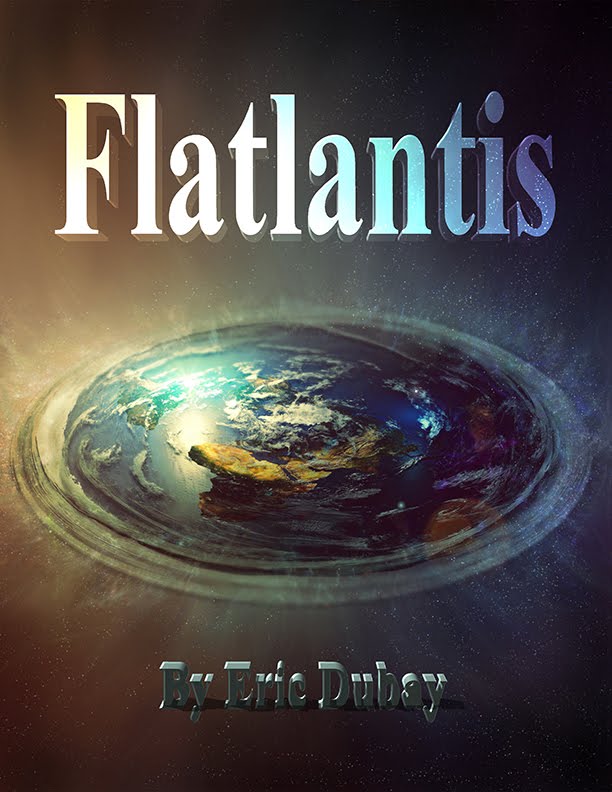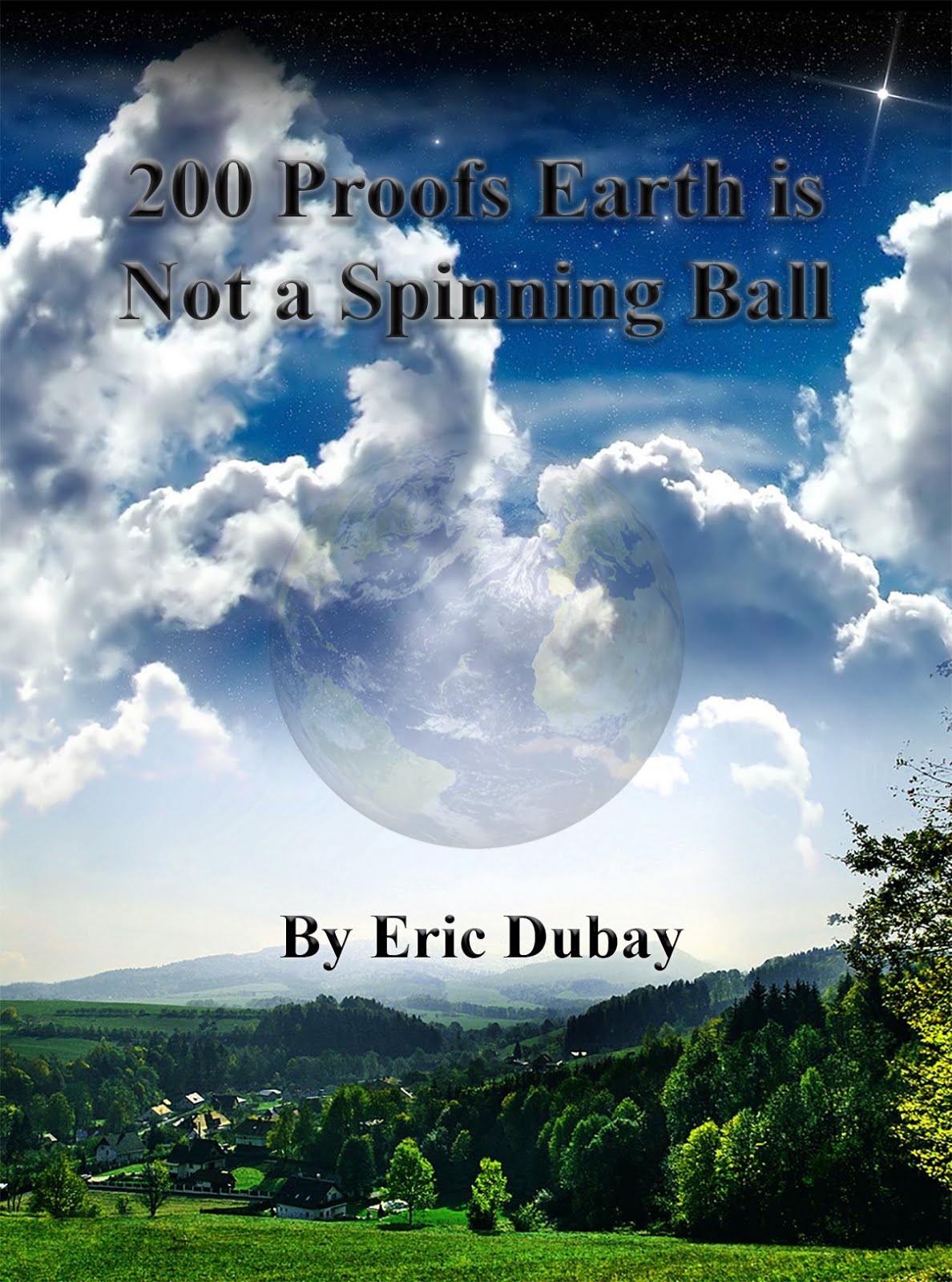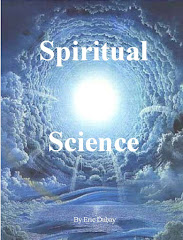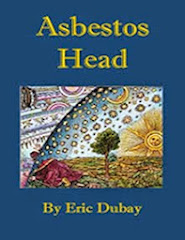In the Eskimo/Inuit language of cold, wintry Alaska there are dozens of words for “snow” - Dozens of words with intricacies and connotations well-known and understood by them, but typically unnoticed and misunderstood by others. Similarly, in the Sanskrit language of ancient, spiritual India there are approximately a dozen different words for “consciousness” – a dozen clearly delineated words with subtle nuances which in English we can only loosely, clumsily call “consciousness.”
“For every psychological term in English there are four in Greek and forty in Sanskrit.” -A. K. Coomaraswamy
So what exactly is consciousness? When western doctors say someone is conscious or unconscious they really just mean “awake” or “asleep.” The patient is called unconscious under anesthetics and conscious when awakened. However this particular meaning is clearly a misnomer because even when supposedly “unconscious” during sleep, coma, or under anesthetics we still dream and are “conscious” of that experience, so our consciousness hasn’t disappeared as implied, it has merely altered/shifted to another state.
“In medicine, the presumption that consciousness is nothing more than a function of the brain is reflected in such statements as, ‘The patient regained consciousness’ – this routine, narrow depiction has assumed that consciousness is a mundane physical phenomenon, a self-evident priority for experience about which nothing more needs to be said.” -David R. Hawkins, M.D., Ph.D., “Power Vs. Force”(249)
Other common (mis)uses of the word consciousness are “awareness” as in “being conscious of something,” and “spirituality” as in “attaining higher consciousness,” but again these are not the denotations understood by modern scientists or ancient mystics. As best expressed by Theoretical Physicist/Experimental Psychologist Peter Russell, the true, simple meaning of consciousness is “the capacity for experience.” Consciousness is the ability to have an inner experience. It is our internal world of thoughts, emotions, sensations, perceptions, and choices, the “I,” the little me in our minds, the sense of self inside us that has never changed since childhood – that is consciousness.
“The
identification and experience of self could be limited to a description of
one’s physical body. Then, of course, we
might well ask, how does one know that one has a physical body? Through observation, we note that the
presence of the physical body is registered by the senses. The question then follows, what is it that’s
aware of the senses? How do we
experience what the senses are reporting?
Something greater, something more encompassing than the physical body,
has to exist in order to experience that which is lesser – and that something
is the mind … The question then arises: How does one know what’s being
experienced by the mind? By observation
and introspection, one can witness that thoughts have no capacity to experience
themselves, but that something both beyond and more basic than thought
experiences the sequence of thoughts, and that that something’s sense of
identity is unaltered by the content of thoughts.” -David R. Hawkins, M.D., Ph.D., “Power Vs. Force”(252)
That something is
consciousness, the capacity for experience, the inner witness of our outer
lives. As written by philosopher Malcolm
Hollick, “Events are experienced by an experiencer, thoughts are thought by
a thinker, pain is felt by a feeler, imaginings are created by an imaginer, and
choices are made by a chooser.”
“What is it that
observes and is aware of all of the subjective and objective phenomena of
life? It’s consciousness itself that resonates
as both awareness and experiencing, and both are purely subjective. Consciousness isn’t determined by content;
thoughts flowing through consciousness are like fish swimming in the ocean. The ocean’s existence is independent of the
fish; the content of the sea doesn’t define the nature of the water itself.” -David R. Hawkins, M.D., Ph.D., “Power Vs. Force”(252-3)
Given the
definition, “the capacity for inner experience,” we can easily observe that
consciousness is not a phenomenon limited only to human beings. In fact, as we trace the trait of
consciousness back through the animal kingdom, it becomes increasingly
difficult to say there exists any animal which doesn’t have its own inner
experience of the outer world. In his
excellent book “From Science to God,” Peter Russell examines this issue in
detail starting with the example of a dog:
“A dog may not
be aware of all the things of which we are aware. It does not think or reason
as humans do, and it probably does not have the same degree of self-awareness,
but this does not mean that a dog does not have its own inner world of
experience. When I am with a dog, I assume that it has its own mental picture
of the world, full of sounds, colors, smells and sensations. It appears to
recognize people and places, much as we might. A dog may at times show fear,
and at other times excitement. Asleep, it can appear to dream, feet and toes
twitching as if on the scent of some fantasy rabbit. And when a dog yelps or
whines we assume it is feeling pain –indeed, if we didn’t believe that dogs
felt pain, we wouldn’t bother giving them anesthetics before an operation.” -Peter Russell, “From Science to God”
My dog, Buddy, always
recognizes me and shows excitement when I come through the door. He also recognizes the veterinarian’s office
and shows fear when we pull into the parking lot. If I ignore Buddy and give more attention to
his sister, Harley, then Buddy will exhibit signs of feeling slighted and
jealous, he will sulk by himself in the corner of the room, his tail no longer
wagging when I go to pet him. If I raise
my voice at him, he will cower, lower his head, and scamper off. From facial recognition to dreams to complex
emotions, dogs exhibit a multitude of expressions associated with
consciousness. To assume they exhibit
all these external characteristics of consciousness without having their own
internal experience is quite implausible.
And as Peter Russell points out, if we actually believed that dogs
didn’t “feel” pain, we wouldn’t give them anesthetics before an operation.
“If dogs possess
consciousness then so do cats, horses, deer, dolphins, whales, and other
mammals. They may not be self-conscious as we are, but they are not devoid of
inner experience. The same is true of birds; some parrots, for example, seem as
aware as dogs. And if birds are sentient beings, then so, I assume, are other
vertebrates – alligators, snakes, frogs, salmon, and sharks. However different
their experiences may be, they all share the faculty of consciousness. The same argument applies to creatures
further down the evolutionary tree. The nervous systems of insects are not
nearly as complex as ours, and insects probably do not have as rich an
experience of the world as we do, but I see no reason to doubt that they have
some kind of inner experience. Where do
we draw the line?” -Peter Russell, “From Science to God”
 Carefully
considering where to draw the line between conscious and non-conscious
entities, the closer one examines the issue, the more difficult it becomes to
argue that any animal is insentient.
Regardless of whether they have a brain or nervous system, no matter how
small or simple, all animals seem to have their own inner experience and
exhibit common characteristics of consciousness.
Carefully
considering where to draw the line between conscious and non-conscious
entities, the closer one examines the issue, the more difficult it becomes to
argue that any animal is insentient.
Regardless of whether they have a brain or nervous system, no matter how
small or simple, all animals seem to have their own inner experience and
exhibit common characteristics of consciousness.
So what about the
plant kingdom? While most would agree
that animals are conscious, most would probably agree that plants are not. Is this where we can draw the line? Apparently not - Thanks to the work of Cleve
Backster, Dr. Ken Hashimoto and others, it is clear that even plants are
remarkably conscious.
In 1966,
polygraph-expert Cleve Backster conducted a series of experiments which
conclusively demonstrated that plants are capable of intelligent thought
processes. First he took a Dracaena
plant (dragon tree) in his office and connected lie detection equipment to its
leaves. Next he watered the plant and
found that its polygraph output was similar to the undulation of human
happiness. In order to test his
developing theory and elicit a stronger reaction, Backster thought to threaten
the plant by burning one of its leaves.
With this thought in mind, even before retrieving a match, he noticed a
strong positive curve appear on the polygraph paper. He then left the room to find some matches,
and as soon as he arrived back, another high peak appeared on the paper. As he lit a match, the plant’s fear reaction
spiked and remained high as he proceeded to burn one of its leaves. In further trials Backster found that if he
showed less inclination to burn the plant, its reaction was weaker, and if he
merely pretended to burn it, there was no reaction. So not only was the plant appearing to show
genuine happiness and fear, but it seemed to be discerning true intentions from
false ones.
“[In] 1966 Cleve Backster, a pioneer of lie-detection methods,
decided to threaten a dragon plant in his office. A few minutes before, and having on a whim
connected the plant to the electrodes of one of his lie detectors, he had
noticed that when he watered its roots, the plant gave what in a human being
would be interpreted as an emotional reaction.
To arouse the strongest reaction he could, Backster first placed a leaf
of the plant in hot coffee, with no apparent response. He then decided on a worse threat: to burn the leaf. But as soon as he thought about the flame,
there was an instant response from the plant – without Backster moving but just
thinking about the threat, the plant had reacted! When he left the room and returned with some
matches, there was a second surge of anticipation from the plant. And as he reluctantly burned the leaf, there
was a subdued but still noticeable reaction from the dragon plant. Over the next 40 years, Backster ran a large
series of experiments, building up a huge archive of data showing that all
organisms are in continual communication in a vast matrix of dynamic and
nonlocal awareness.” -Ervin Laszlo
and Jude Currivan, “Cosmos” (91)
In further trials Backster tried burning the leaves of other nearby
plants not connected to the polygraph, and the original dragon plant, still
connected, registered the same wild response to its friend’s pain as when its
own leaves were burned. In another
experiment Backster placed two plants in an empty room, blindfolded 6 students,
and had them draw straws. The receiver
of the short straw was then secretly instructed to uproot and destroy one of
the two plants. Since they were all
blindfolded, only the short straw student and the remaining plant knew the
identity of the murderer. Two hours
later Backster connected the remaining plant to the polygraph machine and
instructed each student to walk past it.
The murder-witness plant registered absolutely no reaction as the 5
innocent students walked by, but then went crazy almost off the charts as the
murderer came close. Somehow it
correctly identified and emotionally reacted to the guilty student.
 Backster’s experiments suggest that plants are not only conscious, intelligent,
and emotional, but also telepathic!
Plants will indeed register a typical human “fear” reaction on the
polygraph precisely when someone directs a malevolent thought towards them. These experiments have been replicated many
times with the same results. Somehow
plants are able to intuit and react to certain human thought patterns.
Backster’s experiments suggest that plants are not only conscious, intelligent,
and emotional, but also telepathic!
Plants will indeed register a typical human “fear” reaction on the
polygraph precisely when someone directs a malevolent thought towards them. These experiments have been replicated many
times with the same results. Somehow
plants are able to intuit and react to certain human thought patterns.
“The ‘Backster effect’ had also been seen between plants and
animals. When brine shrimp in one
location died suddenly, this fact seemed to instantly register with plants in
another location, as recorded on a standard psychogalvanic response (PGR)
instrument. Backster had carried out
this type of experiment over several hundred miles and among paramecium, mold
cultures and blood samples, and in each instance, some mysterious communication
occurred between living things and plants.
As in Star Wars, each death was registered as a disturbance in The Field.” -Lynne McTaggart, “The Field: The Quest for the Secret Force of the Universe,” (145)
Other experiments have been performed testing the effect of prayer,
positive and negative directed intention and emotion on plants. Dr. Bernard Grad of McGill University
had a team of psychic healers habitually direct positive or negative feelings
onto a variety of plants. The
positively-infused plants survived and thrived, while negatively-infused plants
withered and many of them died. Reverend
Franklin Loehr, a Northampton
pastor, performed similar studies with his parishioners testing the power of
prayer to affect plants and seeds. In
one experiment he planted 46 corn kernels evenly spaced in a round pan with 23
on each side. He then gave daily
“positive-growth” prayer to half the kernels and “anti-growth” prayer to the
other half. Eight days later, the
positive side had 16 sturdy, budding, seedlings growing and the negative side
had only 1 barely left alive. In another
test, one of his parishioners, Erwin Prust, subjected 6 Ivy plants to daily
“anti-growth” prayer while watering them and within 5 weeks, 5 of them were
dead.
In the incredible documentary, “The Secret Life of Plants” Fuji electronics managing
director and chief of research Dr. Ken Hashimoto created special instruments
which translate the electrical output of plants into modulated sounds effectively
giving them a voice. His wife has since
been teaching the Japanese alphabet to her favorite plants. In the documentary Mrs. Hashimoto recites
Japanese letters/phonemes/words and the plants repeat them back to her! Reminiscent of a small child trying to sound-out
new words, the plants are unable to properly imitate the language at first, but
then actually struggle and practice, slowly improving until they are able to
perfectly imitate the human sounds via their electrical output. She says she looks forward to the day when
she can have a conversation with her plants.
 So if plants can learn languages, show emotional output,
react to emotional / intellectual stimulus, communicate with other plants, and
read the minds / intentions of humans, it is quite rational to assume that the
plant kingdom, just like the animal kingdom, is conscious.
So if plants can learn languages, show emotional output,
react to emotional / intellectual stimulus, communicate with other plants, and
read the minds / intentions of humans, it is quite rational to assume that the
plant kingdom, just like the animal kingdom, is conscious.“This demonstrates extremely well that plant life, like all life and indeed everything in the Universe are an inseparable aspect of the same infinite Mind, Consciousness, and intelligence of The Source, The First Cause, of God. Human beings, still totally steeped in the material world and personal ego assume that just because a plant does not appear to have a physical brain, or a mouth, or any other animal characteristics that they are ‘unintelligent’ or simply ‘inanimate.’ Nothing in fact can be further from the truth. The human brain is not the real Mind any more than physical parts of a plant or a mineral are real Mind.” -Adrian Cooper, “Our Ultimate Reality” (217)
So
how far down the evolutionary line does consciousness exist? The work
of Dr. Masaru Emoto suggests that even water is in some sense
conscious. His research began by exposing H2O to nonphysical stimulus and photographing the resulting water crystals with a dark field microscope.
“Japanese researcher, Masaru Emoto, of the I.H.M.-Institute in Tokyo, has revealed how water is fundamentally affected by words, thoughts and emotions - all of which are waveforms. He and his team exposed water to various music and different words and expressions, and then froze it to produce water crystals. When these were examined under a microscope the response of the water was amazing. Look at the way it reacted to the words and thoughts (vibrations) of 'Love and appreciation', and, 'You make me sick - I will kill you'. Imagine the effect on the body of our words and deeds when it is some 70 per cent water. This is how thoughts and words affect us energetically. I should stress that it is not the words that have the effect, but the intent behind them. If you said 'I will kill you' in a light-hearted fashion, as a bit of fun, it would not have the same effect as it would if you meant it, or said it with malevolence" –David Icke, “The David Icke Guide to the Global Conspiracy” (47)
“Japanese researcher, Masaru Emoto, of the I.H.M.-Institute in Tokyo, has revealed how water is fundamentally affected by words, thoughts and emotions - all of which are waveforms. He and his team exposed water to various music and different words and expressions, and then froze it to produce water crystals. When these were examined under a microscope the response of the water was amazing. Look at the way it reacted to the words and thoughts (vibrations) of 'Love and appreciation', and, 'You make me sick - I will kill you'. Imagine the effect on the body of our words and deeds when it is some 70 per cent water. This is how thoughts and words affect us energetically. I should stress that it is not the words that have the effect, but the intent behind them. If you said 'I will kill you' in a light-hearted fashion, as a bit of fun, it would not have the same effect as it would if you meant it, or said it with malevolence" –David Icke, “The David Icke Guide to the Global Conspiracy” (47)
 Thus even water has the ability to distinguish between real human
emotions and fake platitudes. When
infused with positive intent the H2O molecules align themselves into
beautiful, symmetric, sacred geometrical forms, and when infused with negative
intent they align themselves into chaotic, non-symmetrical blobs. Obviously the level and type of consciousness
operating in water molecules is far different from human consciousness, but the
fact that something in the molecules is identifying and reacting to human
emotional/intellectual content suggests that even water is indeed in some sense
conscious.
Thus even water has the ability to distinguish between real human
emotions and fake platitudes. When
infused with positive intent the H2O molecules align themselves into
beautiful, symmetric, sacred geometrical forms, and when infused with negative
intent they align themselves into chaotic, non-symmetrical blobs. Obviously the level and type of consciousness
operating in water molecules is far different from human consciousness, but the
fact that something in the molecules is identifying and reacting to human
emotional/intellectual content suggests that even water is indeed in some sense
conscious.
“We usually
assume that some kind of brain or nervous system is necessary before
consciousness can come into being. From the perspective of the materialist
metaparadigm, this is a reasonable assumption. If consciousness arises from
processes in the material world, then those processes need to occur somewhere,
and the obvious candidate is the nervous system. But then we come up against the inherent
problem of the materialist metaparadigm. Whether we are considering a human
brain with its tens of billions of cells, or a nematode worm with a hundred or
so neurons, the problem is the same: How can any purely material process ever
give rise to consciousness?” -Peter Russell, “From Science to God”
 Can we truly draw
a definitive line between conscious and non-conscious entities in the universe? At what level of simplicity do we assume
matter to be insentient? Even
single-cell organisms react to external stimulus, reproduce, communicate, respirate,
hunt and consume food – is this all an unconscious, insentient “program” of
Newton’s mechanical universe or are even single cells imbued with a slight
degree of consciousness, a miniscule internal experience of their own? When sperm and egg unite, each human begins
their life as a single-cell organism which then rapidly divides and multiplies
into the conscious community of 50 trillion cells we generally know as
human. In classical science,
consciousness is a mysterious emergent property of this process; in spiritual
science, consciousness is the known primary property and the physical world is
the emergent mystery.
Can we truly draw
a definitive line between conscious and non-conscious entities in the universe? At what level of simplicity do we assume
matter to be insentient? Even
single-cell organisms react to external stimulus, reproduce, communicate, respirate,
hunt and consume food – is this all an unconscious, insentient “program” of
Newton’s mechanical universe or are even single cells imbued with a slight
degree of consciousness, a miniscule internal experience of their own? When sperm and egg unite, each human begins
their life as a single-cell organism which then rapidly divides and multiplies
into the conscious community of 50 trillion cells we generally know as
human. In classical science,
consciousness is a mysterious emergent property of this process; in spiritual
science, consciousness is the known primary property and the physical world is
the emergent mystery.
“The capacity for inner experience could
not evolve or emerge out of entirely insentient, non-experiencing matter.
Experience can only come from that which already has experience. Therefore the
faculty of consciousness must be present all the way down the evolutionary tree…There is nowhere
we can draw a line between conscious and non-conscious entities; there is a
trace of sentience, however slight, in viruses, molecules, atoms, and even
elementary particles. Some argue this implies that rocks perceive the world
around them, perhaps have thoughts and feelings, and enjoy an inner mental life
similar to human beings. This is clearly an absurd suggestion, and not one that
was ever intended. If a bacterium’s experience is a billionth of the richness
and intensity of human being’s, the degree of experience in the minerals of a
rock might be a billion times dimmer still. They would possess none of the
qualities of human consciousness – just the faintest possible glimmer of
sentience.” -Peter Russell, “From Science to God”
The ancient Sufi
teaching states that “God sleeps in the rock, dreams in the plant, stirs in
the animal, and awakens in the man.”
What if we replaced the word “God” with “The One Infinite Consciousness?” If God is defined as - an omniscient,
omnipotent, omnipresent intelligence – then God must exist inside all things,
yet outside of all space, time, and matter.
What has quantum physics (and honest introspection) shown exists inside
all things, yet outside space, time, and matter? Consciousness.
“Without
consciousness, there would be nothing to experience form. It could also be said that form itself, as a
product of perception with no independent existence, is thus transitory and
limited, whereas consciousness is all-encompassing and unlimited. How could that which is transitory (with a
clear beginning and ending), create that which is formless (all encompassing
and omnipotent)?” -David R. Hawkins,
M.D., Ph.D., “Power Vs. Force”(250-1)
How can non-experiencing, unintelligent, insentient matter randomly
coalesce into a form that magically creates conscious intelligent life? What mechanical process could possibly bring
consciousness, intelligence, and life into being? How could any material process create
something as immaterial as consciousness?
Why would the material universe even exist without a consciousness to
perceive it? Quantum physics and Eastern
Mysticism are both quite clear that matter does not exist without a
consciousness to perceive it. Albert
Einstein himself said, “A human being is a part of the whole, called by us
‘Universe’ – a part limited in time and space.
He experiences himself, his thoughts and feelings as something separated
from the rest – a kind of optical delusion of consciousness.”
“Whatever our beliefs – irrespective of how far we expand our
perception and regardless of how profound the ability of science may be to
understand processes of emergence – sooner or later we arrive at the
requirement for an originating creative act.
We arrive ultimately at the concept of a cosmic mind. Although science has so far chosen to ignore
this inescapable logic, the deeper we delve into the fundamental mysteries of
Nature – as did Einstein – we see order, harmony, and cosmic mind manifest in
our universe. What is revealed doesn’t
require us to choose between intelligent design and evolution, but to recognize
a co-creative design for evolution. What
we see, literally hidden in full view, is Einstein’s concept of a cosmic mind
at work.” -Ervin Laszlo and Jude
Currivan, “Cosmos” (22)
Unless you
actually think “God” is a bearded white man living in the clouds, perhaps
replacing that word, as Einstein did, with something like “Cosmic Mind,”
“Universal Being,” or “Infinite Consciousness” will help bridge the mental gap
most Westerners seem to have between science and spirituality.
“After I shook the dust of organized religion from my sandals,
I learned that the link between big ‘ol God and little ‘ol me was no more and
no less than consciousness. And each of
us, at and as the very center of us, have this same feeling of I Am, for the
not-so-obvious reason that each one of us is really God pretending to be each
one of us. There is only one I Am, there
is only one God, one Brahma, one Tao, one beingness … we both see the same
world, because we both are the same world.
But we have so cleverly and convincingly hidden ourselves from ourselves
that we really believe that we are separate entities.” -Roger Stephens, “A Dangerous Book” (56)
“The coming scientific revolution heralds the end of dualism in
every sense. Far from destroying God,
science for the first time is proving His existence – by demonstrating that a
higher, collective consciousness is out there.” -Lynne McTaggart, “The Field: The Quest for the Secret Force of the Universe,” (226)
As shown previously, the plenum of physical
forms in the universe is fundamentally an energetic Oneness with consciousness
playing the role of creator and experiencer.
This means the multitude
of transitory material forms and bodies about us, don’t exist without us, and
come from within us.
“A
growing body of research suggests that we’re more than cosmic latecomers simply
passing through a universe that was completed long ago. Experimental evidence is leading to a
conclusion that we’re actually creating the universe as we go and adding to
what already exists! In other words, we
appear to be the very energy that’s forming the cosmos, as well as the beings
who experience what we’re creating.
That’s because we are consciousness, and consciousness appears to be the
same ‘stuff’ from which the universe is made.” -Gregg Braden, “The Divine Matrix” (39)
“The universe
holds its breath as we choose, instant by instant, which pathway to follow; for
the universe, the very essence of life itself, is highly conscious. Every act, thought, and choice adds to a
permanent mosaic; our decisions ripple through the universe of consciousness to
affect the lives of all. Lest this idea
be considered either merely mystical or fanciful, let’s remember that
fundamental tenet of the new theoretical physics: Everything in the universe is
connected with everything else.”
-David R. Hawkins, M.D., Ph.D., “Power Vs. Force” (148)
Download the Spiritual Science 284-page E-book














































